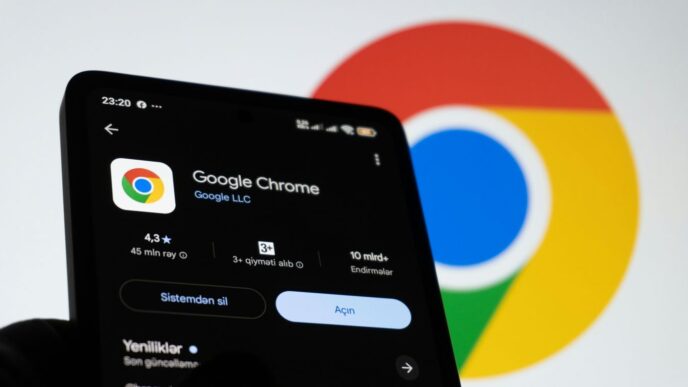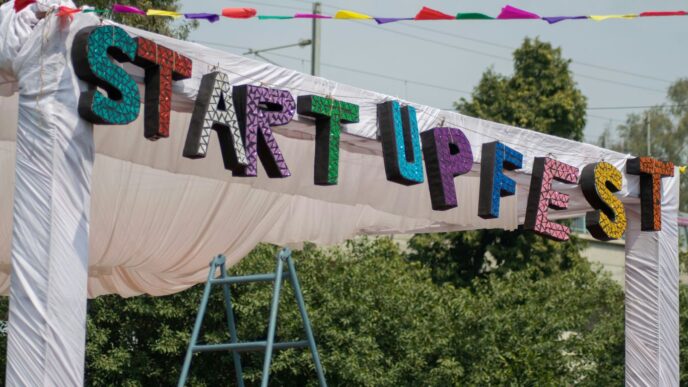So, Microsoft made some big changes in July 2025, cutting a lot of jobs. It wasn’t just a random thing, though. It looks like they’re really pushing hard into AI, and that means some departments got smaller while others, especially those focused on AI, might be growing. We’re going to break down what happened with these microsoft layoffs july 2025 and why it might be happening.
Key Takeaways
- Microsoft’s July 2025 job cuts were part of a larger, year-long reduction, totaling over 15,000 positions by mid-year.
- The primary driver for these layoffs appears to be a massive $80 billion investment in AI infrastructure and related technologies.
- Job posting analysis showed a clear trend of declining traditional software roles and a significant increase in AI-focused positions leading up to the cuts.
- These workforce adjustments are consistent with Microsoft’s historical strategy of using layoffs to fund major strategic shifts, like the move to cloud computing in 2014.
- The company is also consolidating talent into specific hubs, indicating a shift toward a more centralized operational model to support its AI ambitions.
Analyzing The Microsoft Layoffs July 2025
So, Microsoft did it again. In July 2025, the company announced another round of job cuts, and honestly, it’s becoming a bit of a pattern. This wasn’t just a small blip; it was a significant move that added to a year of pretty substantial workforce adjustments. We’re talking about thousands of people affected across the board.
A Year of Systematic Reductions
Looking back, the July announcement wasn’t out of the blue. Microsoft has been steadily trimming its workforce throughout 2025. It started earlier in the year with smaller cuts, often tied to performance reviews, but then things ramped up. In May, there was a big wave, and then July hit with the largest single announcement. It feels like a deliberate, phased approach to reshaping the company.
- January 2025: Initial cuts, around 1% of staff.
- May 2025: A larger group, about 6,000 employees, mostly in product and engineering.
- July 2025: The big one, with 9,000 jobs eliminated.
When you add it all up, we’re looking at over 15,000 people let go in just the first seven months of the year. That’s a pretty big chunk, nearly 7% of their total employees, and it really shows a major shift is happening.
The Scale of Workforce Adjustments
Let’s put this in perspective. The July layoffs alone represented about 4% of Microsoft’s global workforce at the time. This isn’t just about trimming fat; it’s a significant restructuring. It’s a stark contrast to periods of growth and record profits, making the scale of these cuts even more noteworthy. It really makes you wonder what’s driving such aggressive changes.
Historical Context of Microsoft’s Downsizing
Microsoft isn’t new to layoffs, but the 2025 actions stand out. Remember back in 2014? That was huge, with 18,000 people cut after the Nokia deal, which helped them pivot to a cloud focus. Then, after acquiring Activision Blizzard in 2023, another 10,000 jobs disappeared as they looked for ‘synergies.’ Even the gaming division saw cuts in 2024. The 2025 layoffs seem to follow this playbook: using job cuts to fund major strategic shifts. It’s a pattern of using headcount reduction as a tool to finance big changes, like their massive investment in AI. For a look at how gaming has evolved, you can check out the history of the Xbox 360.
Strategic Drivers Behind The 2025 Workforce Cuts
So, why all the job cuts at Microsoft in 2025, especially when the company was doing so well financially? It wasn’t about being in trouble. Instead, it was a really big, deliberate move to shift the company’s focus. Think of it like a massive renovation project for a house that’s already pretty nice – you’re not doing it because the house is falling down, but to make it way better for the future.
The AI Investment Imperative
Microsoft poured a huge amount of money, something like $80 billion, into building out its AI capabilities. This wasn’t just a small budget increase; it was a massive investment in new data centers, tons of graphics processing units (GPUs), and all the other tech needed to really push AI forward. This meant they needed to find the money somewhere, and cutting costs in other areas was the way to do it. It’s like saving up for a really expensive new car by cutting back on eating out.
Organizational Efficiency and Restructuring
Beyond just funding AI, Microsoft also looked at how it was structured. The idea was to make things leaner and more efficient. This involved flattening the organization, meaning fewer layers of management. CEO Satya Nadella even mentioned that AI tools were starting to write a good chunk of their code. This suggests that some roles might have been changed or reduced because AI could handle certain tasks, freeing up people for different kinds of work or, in some cases, making those roles redundant.
Funding a Monumental AI Infrastructure Bet
This is really the core of it. The company was making a huge bet on AI being the future, and that bet required serious cash. The layoffs were a way to reallocate funds from salaries and operational costs directly into this AI infrastructure. It’s a classic business move: you cut spending in one area to massively increase investment in another, especially when you believe that new area will drive future growth. This kind of strategic reallocation is something we’ve seen before, like when they shifted focus after acquiring Nokia, but the scale of the AI investment is pretty unprecedented. It’s all about positioning for what they see as the next big wave of technology, and they’re willing to make big changes to get there. You can see how job posting analytics started to show this shift, with fewer traditional software roles and more AI-focused positions appearing, which is a good way to track these big company moves analyzing job posting analytics.
Early Indicators and Predictive Signals
Looking back, the signs were definitely there before the big July 2025 layoff event at Microsoft. It wasn’t a sudden thing; the company’s hiring patterns started shifting quite a bit in the months leading up to it. Think of it like watching the weather – you see the clouds gathering before the storm.
One of the first things people noticed was a change in the types of jobs being advertised. The Microsoft Careers Portal, along with general job sites like LinkedIn, started showing a big jump in roles related to AI. Terms like "Copilot," "LLM," and "GPU" were popping up everywhere. It was like they were suddenly looking for a whole new skill set.
This AI-keyword spike was pretty dramatic, with the proportion of posts containing these phrases jumping from around 15% in late 2024 to nearly 67% by early 2025. Meanwhile, traditional software engineering jobs seemed to slow down. We saw a noticeable drop, maybe around 25%, in these kinds of postings. It was like the company was shifting its focus, and the job ads were telling the story.
Here’s a quick look at how things changed:
- AI-Related Roles: Saw a significant increase in postings.
- Traditional Software Roles: Experienced a decline in new openings.
- Job Posting Age: Non-AI roles often stayed open longer, sometimes over 30-45 days, suggesting a hiring freeze or a re-evaluation of those positions.
Another interesting signal was the "intern drought." The number of intern and entry-level positions really dropped off. In some cases, companies started requiring 2-3 years of experience for jobs that used to be entry-level. This kind of requirements inflation can signal a company is less willing to invest in training new talent, which often happens before workforce adjustments. It’s a bit like how Virgin Galactic is advancing its spaceflight technology, but in this case, it was about adjusting the internal talent pipeline advancements in their spaceflight technology.
We also saw a trend where job ads moved from being open to "multiple locations" to being tied to specific talent hubs. This suggested a move towards a more centralized strategy, which can sometimes precede restructuring efforts. It’s all about understanding these subtle shifts in how companies signal their intentions through their hiring activities.
The July 2025 Layoff Event
Details of the July Job Eliminations
So, the big news dropped on July 2nd, 2025. Microsoft announced it was cutting about 9,000 jobs. That’s roughly 4% of their entire global workforce, which was around 228,000 people at the time. This wasn’t just a random Tuesday announcement; it felt like the culmination of a lot of smaller moves that had been happening all year. It really signaled that the company was making some pretty big changes.
Impact Across Multiple Business Units
It wasn’t just one department that got hit. The cuts seemed to spread across various parts of the company. We saw impacts in areas like product development, engineering, and even some support functions. It really looked like a broad restructuring effort, not just a targeted trim. This wide reach suggests that the company was looking at its overall structure and deciding where it needed to be leaner or shift focus.
Comparison to Previous Reduction Rounds
When you look back, Microsoft has done layoffs before, but the scale and timing of the July 2025 event stand out. For instance, back in 2014, they cut about 18,000 jobs after the Nokia acquisition, which was a huge shift. Then, in 2023, after buying Activision Blizzard, another 10,000 jobs went. The 2025 cuts, especially the July batch, seem to be part of a more sustained effort that started earlier in the year. We saw smaller cuts in January and then a bigger wave in May, so July’s announcement was more like the main event in a series of adjustments. It’s clear they’ve been strategically adjusting their workforce size for a while now.
Impact on Specific Divisions and Roles
When Microsoft announced its July 2025 job cuts, it wasn’t just a random sweep. The changes hit certain parts of the company harder than others, really showing where the company is shifting its focus. It’s like they’re rearranging the furniture, but with people.
Focus on Engineering and Product Roles
It seems like a lot of the cuts landed squarely on the shoulders of engineers and product managers, especially those working on older software. Think about it: if the company is pouring billions into AI, the teams building the next version of Windows or Office might not be seen as the top priority anymore. We saw a big drop in job postings for traditional software development roles, a trend that started way back in late 2024. It’s a clear signal that the skills needed are changing, and if your skills aren’t aligned with AI or cloud infrastructure, you might be out of luck. The demand for AI-specific engineering talent, however, has skyrocketed. This isn’t just about fewer jobs; it’s about a fundamental change in what kind of technical work Microsoft values most right now.
Changes in Gaming and Mixed Reality Teams
The gaming division, particularly Xbox, took a significant hit. This was pretty surprising to many, given the recent Activision Blizzard acquisition. But looking closer, it seems like the gaming sector is being viewed as a cash cow to fund the massive AI investments. We’ve heard about studios closing and projects being canceled, which is tough for everyone involved. It’s a stark example of how strategic priorities can reshape even established business units. Mixed reality, while still a focus, also saw some adjustments, likely as resources were redirected. It’s a tough time for folks in these areas, and the future direction feels a bit uncertain.
The Rise of AI Sales Solutions
On the flip side, there’s a noticeable uptick in roles related to AI sales and solutions. As Microsoft pushes its AI products and services, they need people who can sell them and help customers integrate them. This means traditional sales roles are being phased out or transformed into these new AI-focused positions. It’s a clear indication that the company is building out its commercial capabilities to match its technological advancements. If you’re in sales and haven’t started learning about AI, now might be the time to get up to speed on these new tech trends.
Geographic Strategy and Talent Reallocation
It looks like Microsoft is really changing where they focus their talent. We’re seeing a big move away from the old way of doing things, where maybe everyone was expected to be in one main office. Instead, the company seems to be building up specific spots around the world for different kinds of work, especially with all the AI stuff happening.
Consolidation of Talent Hubs
Microsoft’s approach to its workforce is definitely shifting. They’re not just spreading jobs everywhere anymore. It seems like they’re picking certain cities and regions to become major centers for their operations. This means some places might see a lot more hiring, while others might see fewer opportunities, especially in older types of jobs.
Shift from Distributed to Centralized Models
While it might seem like tech companies are all about remote work and distributed teams, Microsoft’s recent moves suggest a bit of a pivot. They’re not completely abandoning remote work, but there’s a noticeable trend towards concentrating certain functions and talent in specific, often larger, hubs. This could be about efficiency, collaboration, or maybe even cost savings.
Impact on Global Workforce Distribution
This strategic shift has a pretty big effect on where people work. We’re seeing fewer traditional roles in places like Redmond, Washington, which used to be a big engineering center. Instead, those jobs are either disappearing or being replaced by roles focused on AI. Meanwhile, places like Bangalore and Hyderabad in India are getting a lot of new positions, particularly in AI and cloud services, and also in customer support. Other spots like Shenzhen, China, and Riyadh, Saudi Arabia, are also growing, especially for AI and hardware roles. Even in the US, cities like Austin, Atlanta, and Huntsville are becoming more important for AI and cloud work, possibly as a way to avoid the higher costs associated with places like Silicon Valley.
Here’s a look at some of the key areas and what’s happening:
- Redmond, Washington: Saw a significant reduction (over 60%) in older job roles between March 2024 and August 2025. It’s now becoming a core hub for AI innovation.
- Bangalore, India: A major recipient of new AI and cloud positions, with substantial investment in talent and infrastructure.
- Hyderabad, India: Noticed an increase in customer support and technical solutions roles, aligning with a strategy to scale support more affordably.
- Shenzhen, China & Riyadh, Saudi Arabia: Experiencing growth in AI and hardware roles, backed by new funding.
- Austin, Atlanta, Huntsville (US): Emerging as important centers for AI, cloud technology, and government contracts, potentially as a strategy to access talent markets outside of expensive areas like Silicon Valley.
Broader Implications of Microsoft Layoffs July 2025

So, what does all this mean for Microsoft and, honestly, for the rest of us? These July 2025 job cuts, following a year of similar moves, really highlight how AI is changing the game for big tech companies. It’s not just about making things cheaper; it’s a fundamental shift in how they operate.
AI as a Catalyst for Corporate Transformation
Microsoft’s massive investment in AI infrastructure, reportedly around $80 billion, is a huge bet. To fund this, they’ve had to make some tough choices, and that means cutting jobs. It’s a bit of a paradox – a company making record profits is still letting people go. But when you look at the numbers, like Azure’s earnings growth and the sheer cost of building out AI capabilities, the picture gets clearer. They’re essentially trading salary expenses for AI hardware and development. It’s like they’re saying, "We need this AI stuff more than we need these specific roles right now." This move signals that AI isn’t just a new product line; it’s becoming the core of their business strategy, changing everything from product development to how they sell. Even things like Windows Ink are being re-evaluated in this new AI-centric landscape.
Workforce Sentiment and Ethical Considerations
When a company like Microsoft, known for its stability, makes such significant cuts, it definitely makes employees nervous. Even with the company’s strong financial performance, the layoffs raise questions about job security and the future of work. There’s a lot of talk about how AI tools, like Copilot, are being used to automate tasks, with CEO Satya Nadella even mentioning AI writing a good chunk of their code. This is a big deal for engineers and other roles. It brings up ethical questions about how companies manage these transitions and support their employees through such major changes. It’s a tough balance between business needs and the human impact.
Long-Term Strategic Outlook for Microsoft
Looking ahead, these layoffs seem to be about positioning Microsoft for the long haul in the AI era. They’re streamlining operations, consolidating talent in key areas, and shifting focus towards AI-driven roles, like "AI Sales Solutions." This means fewer traditional software roles and more emphasis on specialized AI skills. It’s a strategic realignment that could pay off big time if their AI investments hit the mark. However, it also means a significant change in the company’s structure and the types of jobs available. It’s a high-stakes move that will likely shape Microsoft’s trajectory for years to come, and it’s something many other companies will be watching closely.
Looking Ahead: AI, Restructuring, and What’s Next
So, what does all this mean for Microsoft and the tech world? It’s clear the company isn’t just trimming the fat; it’s actively reshaping itself. The massive investment in AI infrastructure, coupled with these significant job cuts, shows a bold move towards an AI-first future. While it’s tough for the thousands who lost their jobs, this strategic shift, driven by the potential of AI and the need for efficiency, is likely to define Microsoft’s path for years to come. We’ll be watching closely to see how this gamble pays off.
Frequently Asked Questions
Why did Microsoft have layoffs in July 2025?
Microsoft cut jobs in July 2025 as part of a big plan to change the company. They spent a lot of money, over $80 billion, on new AI technology and needed to free up money for it. They also used AI tools to do some jobs, which meant fewer people were needed for those tasks.
How many people lost their jobs at Microsoft in 2025?
Microsoft let go of more than 15,000 employees throughout 2025. The biggest cuts happened in July, when about 9,000 people were affected, but there were also smaller cuts earlier in the year.
Were the layoffs only in July 2025?
No, the July 2025 layoffs were the largest single event, but they were part of a bigger plan that started earlier in the year. There were job cuts in January and May 2025 as well, affecting different teams within the company.
Which departments were most affected by the layoffs?
Many different departments were impacted, but jobs in engineering and product development saw significant reductions. Teams working on gaming and mixed reality also experienced cuts. However, there was a growing need for people in AI sales roles.
Did Microsoft’s job cuts happen because the company was doing poorly?
Actually, no. Microsoft was making a lot of money during this time. The layoffs weren’t because they were in trouble. Instead, they were a strategic move to invest heavily in AI and make the company more efficient, kind of like a major company makeover.
Are there signs that predict future layoffs at tech companies?
Yes, by watching job postings, we can see early signs. If a company stops posting many jobs for traditional roles and starts posting a lot more for AI-related jobs, or if they start requiring more experience for entry-level jobs, it can signal upcoming changes or layoffs.














